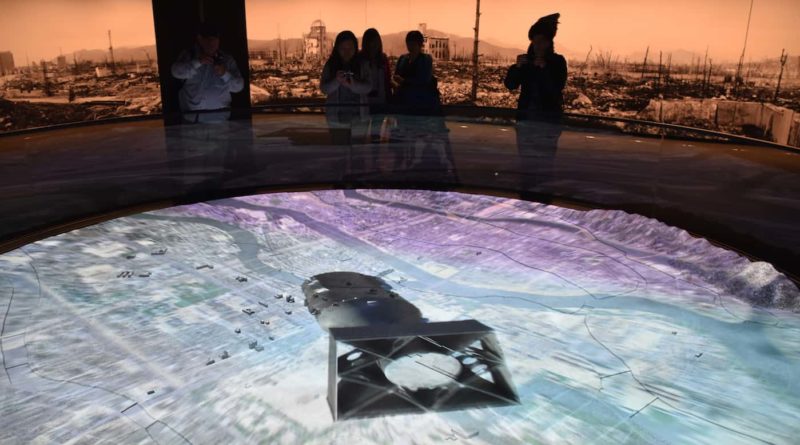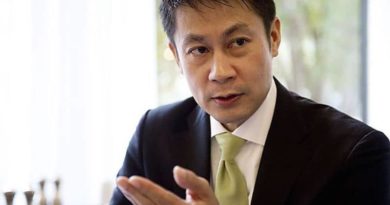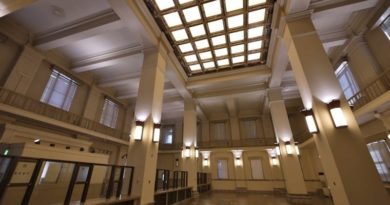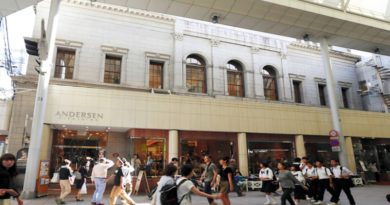Hiroshima Peace Museum’s A-bomb Video Diorama
One of the first things to confront you on entering the Hiroshima Peace Memorial Museum is a computer generated video representation of the bombing that devastated the city.
Titled “White Panorama,” the circular diorama is one of the centerpieces of the new museum’s permanent exhibition in its main building which reopened on April 26, 2017. In about 1.5 minutes the graphic projection onto a 5m wide diorama of an arial view of the city vividly displays the almost instant destruction of the bustling urban center on August 6, 1945.
After walking by large scale photographs of the pre-bombing cityscape, which, amongst other things, show the Industrial Promotion Hall (which would become known around the world as the A-bomb Dome), the Aioi “T-bridge” and groups of children swimming and posing for photographs, the viewer enters the first room of the new permanent exhibition, a section titled “A Lost Way of Life”, where the diorama is found, surrounded by a huge photographic panorama of the ruined city which lines the curved wall.
On my first look at the exhibit, most of the visitors silently watched and/or videoed the presentation before moving on to other parts of the museum. I did overhear a couple of people comment on the instantaneous nature of the impact of the blast was on the city, which one imagines is one of the aims of the piece.
As the debates surrounding the now removed plastic mannequins representing A-bomb victims illustrate attempts to represent the unimaginable are fraught with difficulties. Watching the more “high-tech” 3D presentation several times, I thought about the efforts by survivors and activists over the years to shift the perspective of the bombing from the view of the Enola Gay to that of the people on the ground. This is not necessarily a criticism of the exhibit, but it is always worth examining how representation of any historical event fits into and shapes wider discourse.





